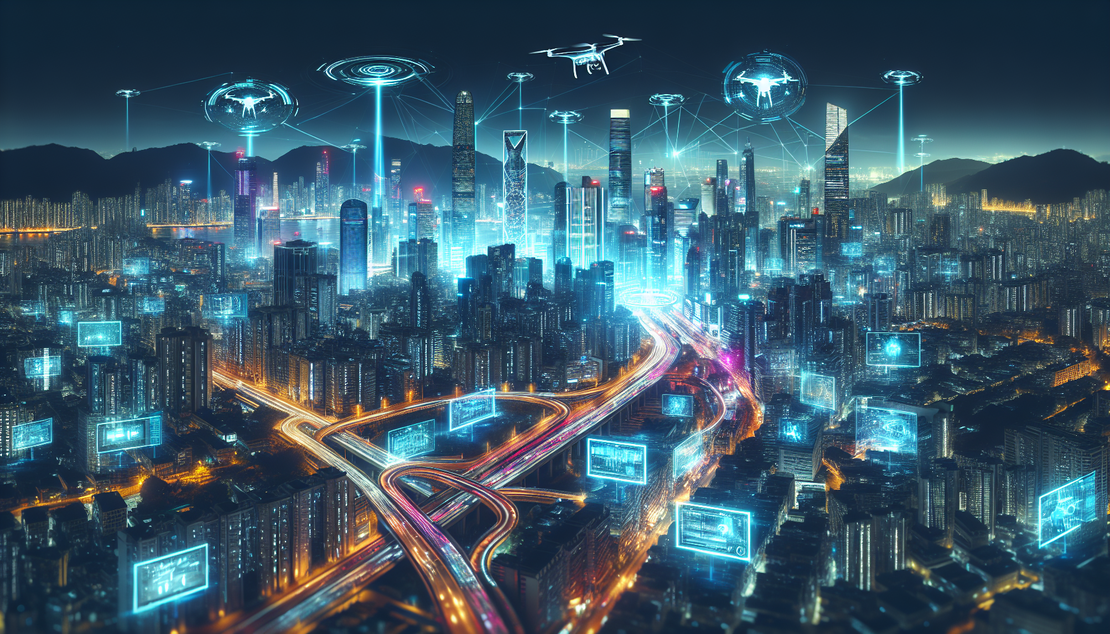
Enhancing Cybersecurity with AI and Automation Solutions
- Rajdeep Barad
- Enhancing cybersecurity , Ai , Automation solutions , Cyber threats , Ai algorithms
- November 29, 2024
Enhancing Cybersecurity with AI and Automation Solutions
Understanding the importance of cybersecurity in the digital age
Cyber threats are evolving and becoming more sophisticated. With the rise of technology, cybercriminals are constantly developing new methods to infiltrate systems and steal sensitive information.
Data breaches can have severe consequences for businesses. Beyond financial losses, a data breach can damage a company’s reputation, leading to a loss of customer trust and potential legal ramifications.
Compliance requirements are increasing for data protection. Regulations like GDPR and CCPA mandate stringent measures to safeguard user data, necessitating robust cybersecurity protocols for businesses.
Traditional cybersecurity measures may not be enough to combat modern threats. Static security approaches are no match for dynamic cyber threats that require real-time monitoring and adaptive responses.
Pro Tip: Regularly assess your cybersecurity measures to ensure they align with the latest threat landscape. Stay informed about emerging cyber risks and update your defenses accordingly.
Introduction to AI and automation in cybersecurity
How AI can enhance threat detection and response time. Artificial Intelligence (AI) algorithms can analyze vast amounts of data in real-time to identify patterns indicative of cyber threats, enabling quicker threat detection and proactive incident response.
The role of automation in streamlining cybersecurity processes. Automation technologies can handle repetitive tasks such as patch management and log analysis, freeing up cybersecurity professionals to focus on strategic initiatives.
Leveraging machine learning for adaptive security strategies. Machine Learning algorithms can learn from past security incidents to enhance threat prediction and assist in creating agile security protocols.
Pro Tip: Invest in AI-powered cybersecurity solutions that can adapt and learn from new threats automatically, reducing the manual effort required to update security measures continuously.
Benefits of integrating AI and automation in cybersecurity
Improved detection of anomalies and potential threats. AI-driven systems can detect irregular patterns and anomaly behaviors that may go unnoticed by traditional security measures, enhancing threat detection capabilities.
Reduced response time to security incidents. Automation can swiftly respond to security alerts, isolating threats, and initiating incident response protocols in real-time, minimizing the impact of breaches.
Enhanced scalability of cybersecurity efforts. AI and automation enable organizations to scale their cybersecurity operations efficiently to address growing threats and adapt to changes in their digital environment.
Efficient utilization of cybersecurity resources. By automating routine tasks and leveraging AI for threat analysis, organizations can optimize their cybersecurity resources, making the most of limited budgets and human capital.
Pro Tip: Measure the performance of your AI and automation solutions regularly to track their impact on improving cybersecurity metrics such as mean time to detect (MTTD) and mean time to respond (MTTR) to security incidents.
Challenges and considerations in implementing AI and automation
Ensuring compatibility with existing cybersecurity infrastructure. Integrating AI and automation tools with legacy systems can pose compatibility challenges, requiring careful planning and possibly additional investment in updating infrastructure.
Addressing the shortage of cybersecurity talent with technology. While AI and automation can augment cybersecurity capabilities, organizations still need skilled professionals to oversee these technologies and interpret the insights they provide.
Mitigating risks of AI bias and false positives. Biases in AI algorithms or an overreliance on automation can lead to false positives, creating unnecessary alerts and potentially overlooking genuine security threats.
Maintaining user trust and transparency in automated security measures. Communicating the role of AI and automation in cybersecurity to stakeholders is crucial for building trust and ensuring transparency in how security measures are implemented.
Pro Tip: Implement explainable AI practices that provide insights into how AI algorithms reach specific conclusions, helping to build trust among stakeholders and enabling better decision-making in cybersecurity processes.
Best practices for implementing AI and automation in cybersecurity
Conducting a comprehensive risk assessment before deployment. Understand your organization’s specific cybersecurity needs and risks to tailor AI and automation solutions effectively to address critical vulnerabilities.
Integrating AI tools with existing security systems for seamless operation. Ensure that AI and automation technologies work harmoniously with your current cybersecurity infrastructure to maximize their effectiveness and minimize disruptions.
Providing continuous training and monitoring for AI models. Regularly update AI models with new data and provide ongoing training to enhance their accuracy and keep pace with evolving cyber threats.
Collaborating with cybersecurity experts for optimal results. Work with skilled cybersecurity professionals to fine-tune AI algorithms, interpret results effectively, and develop tailored strategies to counter emerging cyber threats.
Pro Tip: Foster a culture of cybersecurity awareness within your organization by involving all employees in cybersecurity training and best practices. A united front against cyber threats can significantly strengthen your overall security posture.
Ready to transform your digital vision?
Get in touch with us to explore how our cutting-edge solutions can elevate your business to new heights. Contact us today!
Get in Touch


